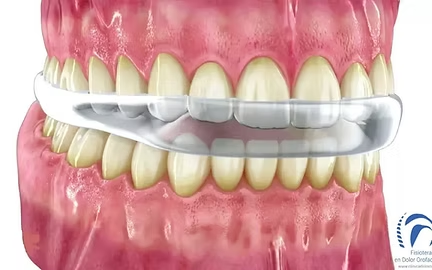
The objective of the unloading splint is to vary the position in which the mandible fits against our upper jaw, thus deceiving our masticatory apparatus, and making the splint slide our mandible until it coincides with the maximum position of articular relaxation.
In order to manufacture it, we only need to take measurements, in which we obtain a mold of the upper jaw teeth, a lower mold and a record of the patient’s bite.
It takes a short period of time to get used to sleeping with the splint, and once we get into the habit of using it at night, we will begin to notice an improvement in our night’s rest.
In posterior teeth (premolars and molars), it may be convenient to protect the crown of the tooth (the visible part, which protrudes from the gum) with metal-porcelain caps, for greater durability.
